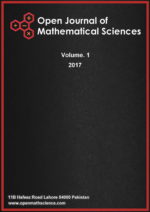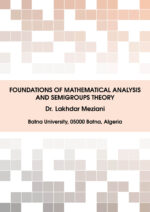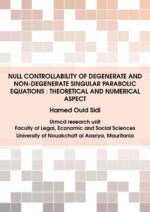Ptolemy Scientific Research Press (PSR Press)is a highly regarded publisher of scientific literature dedicated to bringing the latest research and findings to a broader audience. With a focus on cutting-edge research and technology, Ptolemy Scientific Research Press offers a range of publications catering to professionals, researchers, and student’s needs. Whether looking for information on the latest breakthroughs in physics, biology, engineering, or computer science, you can trust Ptolemy Scientific Research Press to deliver insightful, accurate, and engaging content. With its commitment to quality, accessibility, and innovation, Ptolemy Scientific Research Press is an essential resource for anyone interested in science and technology.

Latest Published Articles
OMS-Vol. 2 (2018), Issue 1, pp. 84–92 | Open Access Full-Text PDF
Giovanni Mingari Scarpello, Daniele Ritelli
Abstract:In this article we continue the investigations presented in our previous papers [1,2,3,4], presenting some, for the best of our knowledge, new transformations of the Gauss hypergeometric function (3) and (13). They have been obtained using only elementary methods and stem from a couple of integrals evaluated in terms of complete elliptic integral of first kind by Legendre in [5] Chapter XXVII, at sections II and III.
Wiener polarity index of quasi-tree molecular structures
OMS-Vol. 2 (2018), Issue 1, pp. 73–83 | Open Access Full-Text PDF
Zihao Tang, Li Liang, Wei Gao
Abstract:As an important branch of theoretical chemistry, chemical index calculation has received wide attention in recent years. Its theoretical results have been widely used in many fields such as chemistry, pharmacy, physics, biology, materials, etc. and play a key role in reverse engineering. Its basic idea is to obtain compound characteristics indirectly through the calculation of topological index. As a basic structure, quasi-tree structures are widely found in compounds. In this paper, we obtain the maximal value and the second smallest value of quasi-tree graphs of order \(n.\)
Fixed point results for the complex fractal generation in the S -iteration orbit with s -convexity
OMS-Vol. 2 (2018), Issue 1, pp. 56–72 | Open Access Full-Text PDF
Krzysztof Gdawiec, Abdul Aziz Shahid
Abstract:Since the introduction of complex fractals by Mandelbrot they gained much attention by the researchers. One of the most studied complex fractals are Mandelbrot and Julia sets. In the literature one can find many generalizations of those sets. One of such generalizations is the use of the results from fixed point theory. In this paper we introduce in the generation process of Mandelbrot and Julia sets a combination of the S-iteration, known from the fixed point theory, and the s-convex combination. We derive the escape criteria needed in the generation process of those fractals and present some graphical examples.
On the viscosity rule for common fixed points of two nonexpansive mappings in CAT(0) spaces
OMS-Vol. 2 (2018), Issue 1, pp. 39–55 | Open Access Full-Text PDF
Ebenezer Bonyah, Maqbool Ahmad, Iftikhar Ahmad
Abstract:In this paper, we establish viscosity rule for common fixed points of two nonexpansive mappings in the framework of CAT(0) spaces. The strong convergence theorems of the proposed technique is proved under certain assumptions imposed on the sequence of parameters. The results presented in this work extend and improve some recent announced in the literature.
Combination of Homotopy Perturbation Method (HPM) and Double Sumudu Transform to Solve Fractional KdV Equations
OMS-Vol. 2 (2018), Issue 1, pp. 29–38 | Open Access Full-Text PDF
Hamood ur Rehman, Muhammad Shoaib Saleem, Ayesha Ahmad
Abstract:In this work, we developed homotopy perturbation double Sumudu transform method (HPDSTM) which is obtained by combining homotopy perturbation method, double Sumudu transform and He’s polynomials. The method is applied to find the solution of linear fractional one and two dimensional dispersive KdV and nonlinear fractional KdV equations to illustrate the reliability of the method. It is observed that the solutions obtained by the method converge rapidly to the exact solutions. This method is very powerful, and professional techniques for solving different kinds of linear and nonlinear fractional order differential equations.
M-Polynomials and degree-based Topological Indices of Some Families of Convex Polytopes
OMS-Vol. 2 (2018), Issue 1, pp. 18–28 | Open Access Full-Text PDF
Muhammad Riaz, Wei Gao, Abdul Qudair Baig
Abstract:In this article, we compute closed forms of M-polynomial for three general classes of convex polytopes. From the M-polynomial, we derive degree-based topological indices such as first and second Zagreb indices, modified second Zagreb index, Symmetric division index, etc.








